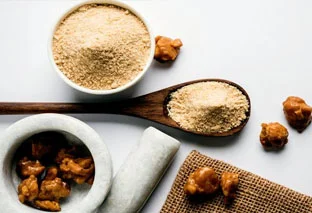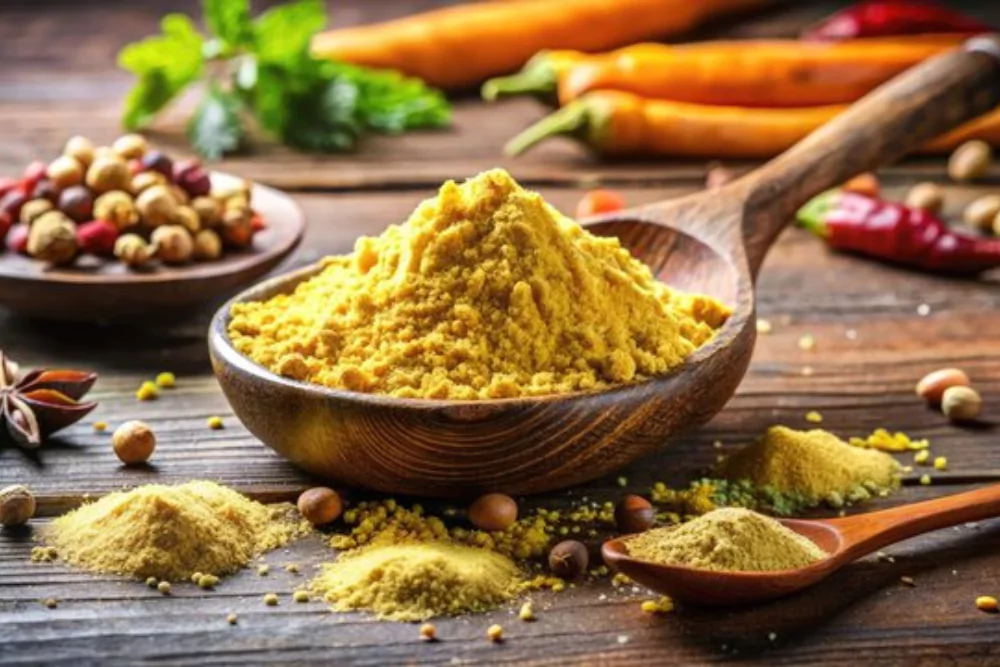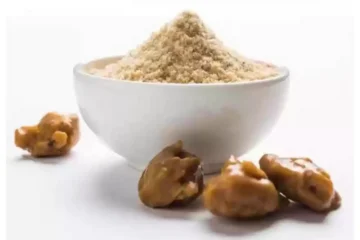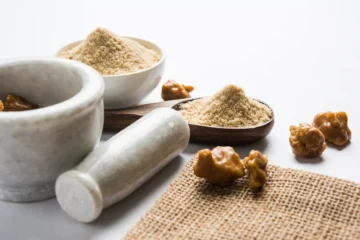How can I use Hing for common digestive issues like bloating and gas?
Short Answer: Hing can be used to alleviate digestive issues like bloating and gas by adding it to warm water or meals. It helps in reducing discomfort and promoting digestion.
Long Answer:
1. Mix a pinch of Hing powder in warm water and drink it before meals to prevent bloating and gas.
2. Incorporate Hing in your cooking by adding it to lentil soups, curries, and vegetable dishes. It enhances flavor and aids digestion.
3. Prepare a Hing and buttermilk drink by adding a pinch of Hing to a glass of buttermilk. This soothing drink can help relieve digestive discomfort.
Hing, also known as Asafoetida, has been a staple in traditional medicine for centuries. Its potent aroma and strong flavor might not be everyone’s favorite, but its health benefits are undeniable. For digestive issues like bloating and gas, Hing acts as a natural antispasmodic, helping to relax the stomach muscles and ease discomfort. When mixed in warm water, it can serve as a quick remedy for sudden bouts of indigestion. Additionally, incorporating Hing into daily meals not only adds a unique flavor but also ensures that your digestive system stays in good health. The buttermilk and Hing drink is a classic remedy, particularly effective after a heavy meal.
Are there any side effects of using Hing regularly in home remedies?
Short Answer: While Hing is generally safe, overuse may cause side effects such as digestive irritation, headaches, and allergic reactions. Use it in moderation.
Long Answer:
1. Consuming Hing in large quantities can lead to digestive issues such as nausea, vomiting, and diarrhea.
2. Some individuals may experience headaches or dizziness when using Hing excessively.
3. Allergic reactions, although rare, can occur. Symptoms may include skin rashes, itching, and swelling.
4. Pregnant and breastfeeding women should consult a healthcare provider before using Hing regularly.
As with any natural remedy, moderation is key when using Hing. While it’s beneficial in small amounts, excessive use can lead to unwanted side effects. Overconsumption can irritate the digestive tract, causing symptoms like nausea and diarrhea. Additionally, some people might experience headaches or dizziness, particularly if they are sensitive to strong spices. Allergic reactions are rare but possible, so it’s important to be aware of any adverse effects and discontinue use if necessary. Pregnant and breastfeeding women should exercise caution and consult with a healthcare provider before incorporating Hing into their daily regimen. It’s always best to start with small amounts and observe how your body reacts before making it a regular part of your diet.
What are the best ways to incorporate Hing into daily meals for health benefits?
Short Answer: Incorporate Hing into daily meals by adding it to curries, dals, pickles, and teas. It enhances flavor and offers various health benefits.
Long Answer:
1. Add a pinch of Hing while tempering spices for curries, lentils (dals), and vegetable dishes. This enhances the dish’s flavor and aids digestion.
2. Use Hing in homemade pickles and chutneys. Its antibacterial properties help preserve the pickles and improve gut health.
3. Prepare a soothing tea by adding a pinch of Hing to hot water with lemon and honey. This drink can aid digestion and relieve respiratory issues.
4. Hing can also be sprinkled on salads or roasted nuts for an added flavor boost and health benefits.
Incorporating Hing into your daily meals is easier than it might seem. When cooking curries, lentils, or vegetable dishes, adding a small amount of Hing during the tempering process can significantly enhance the flavor and help with digestion. Hing’s antibacterial properties make it an excellent addition to homemade pickles and chutneys, where it not only acts as a preservative but also promotes gut health. For those who enjoy a warm beverage, Hing tea made with hot water, lemon, and honey can be a soothing drink that aids digestion and relieves respiratory issues. You can also sprinkle Hing on salads or roasted nuts for an extra burst of flavor and health benefits. Experimenting with Hing in various dishes can help you discover new and delicious ways to enjoy its numerous health advantages.
Can Hing help with respiratory problems, and if so, how should it be used?
Short Answer: Hing can help alleviate respiratory problems by reducing congestion and promoting easier breathing. It can be used in steam inhalation or as a chest rub.
Long Answer:
1. Add a pinch of Hing to a bowl of hot water and inhale the steam. This helps clear nasal congestion and soothes respiratory passages.
2. Prepare a chest rub by mixing Hing with a carrier oil like coconut or mustard oil. Apply this mixture to the chest to relieve congestion and improve breathing.
3. Drinking Hing tea with honey can help soothe the throat and reduce coughing.
4. Using Hing in daily cooking can help maintain respiratory health and prevent common colds and coughs.
Hing is not only beneficial for digestive issues but also for respiratory problems. Its anti-inflammatory and expectorant properties make it effective in reducing congestion and promoting easier breathing. One of the simplest ways to use Hing for respiratory issues is steam inhalation. Adding a pinch of Hing to a bowl of hot water and inhaling the steam can help clear nasal congestion and soothe respiratory passages. Another method is to prepare a chest rub by mixing Hing with a carrier oil like coconut or mustard oil. Applying this mixture to the chest can relieve congestion and improve breathing. Drinking Hing tea with honey is another effective remedy for soothing the throat and reducing coughing. Incorporating Hing into your daily cooking can help maintain respiratory health and prevent common colds and coughs, making it a valuable addition to your home remedy toolkit.
How does Hing compare to other natural remedies for treating headaches and colds?
Short Answer: Hing is effective in treating headaches and colds, but it works differently from other natural remedies. It has anti-inflammatory and analgesic properties that help relieve symptoms.
Long Answer:
1. Compared to ginger, which is commonly used for colds, Hing has stronger anti-inflammatory properties that help reduce headaches and congestion.
2. Hing’s analgesic properties make it effective in relieving headache pain, similar to peppermint oil but without the cooling sensation.
3. While turmeric is known for its immune-boosting properties, Hing is more effective in directly alleviating symptoms of colds and headaches due to its antispasmodic effects.
4. Combining Hing with other natural remedies like honey and lemon can enhance its effectiveness and provide comprehensive relief from symptoms.
When comparing Hing to other natural remedies for treating headaches and colds, it’s important to understand how each remedy works. Ginger, for example, is a popular remedy for colds due to its immune-boosting properties. However, Hing has stronger anti-inflammatory properties that can more effectively reduce headaches and congestion. Hing’s analgesic properties make it effective in relieving headache pain, similar to peppermint oil, but without the cooling sensation.
Conclusion
Hing, or Asafoetida, is a powerful spice with numerous health benefits. Its ability to aid digestion, alleviate respiratory issues, and provide relief from headaches and colds makes it a valuable addition to any home remedy toolkit. By incorporating Hing into your daily meals and remedies, you can take advantage of its natural healing properties. However, it’s essential to use Hing in moderation to avoid potential side effects. As with any natural remedy, it’s always best to consult with a healthcare provider before making significant changes to your routine.





